Term 3 Chapter 4 | 2nd EVS Environmental Science - Day sand Night | 2nd EVS Environmental Science : Term 3 Unit 4 : Day sand Night
Chapter: 2nd EVS Environmental Science : Term 3 Unit 4 : Day sand Night
Day sand Night
Unit 4
Day sand Night
You will learn about
* The sky during
the day and night
* Rhythms of
the day and night
* Directions
Observe the picture. What do you see?
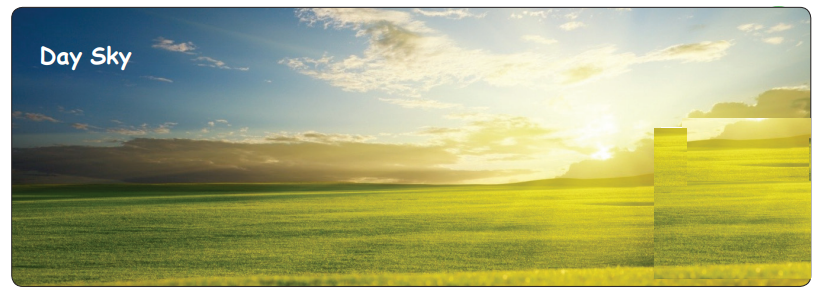
Day Sky
The Sun
The Sun
gives us light and heat.
It helps plants grow. The Sun is much bigger than the
earth where we live. The Sun looks small because it is far away from the
earth. There will be no life on earth if there is no Sun.
Do you know?: The sunlight takes around 8 minutes to reach the earth.
Shadow
When an object does not allow light to
pass through it, a dark area is formed. This
is called a shadow.
Stand with your back to Sun. Look at the
ground in front of you. What you see is your shadow. Find out if your shadow moves
with you.
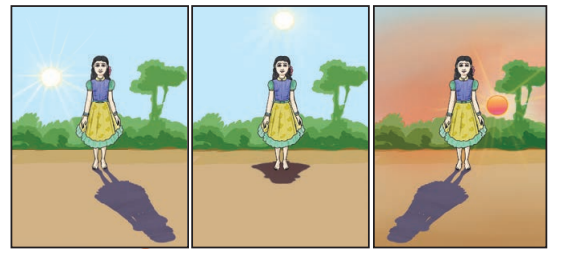
* Observe the things around
you that make shadows and share it with
your friends.
Have you noticed that the size of your shadow changes? Observe your shadow in the morning, afternoon and evening and find out its size.

Night Sky
Let Us Discuss
Can we see in the dark? We need light to
see things. Observe the pictures. How is the night sky different from the day sky?

The Moon
In the night sky, we can see the moon, many stars and clouds too. As you know, the moon does not
have light of
its own. It gets its light from the
Sun.
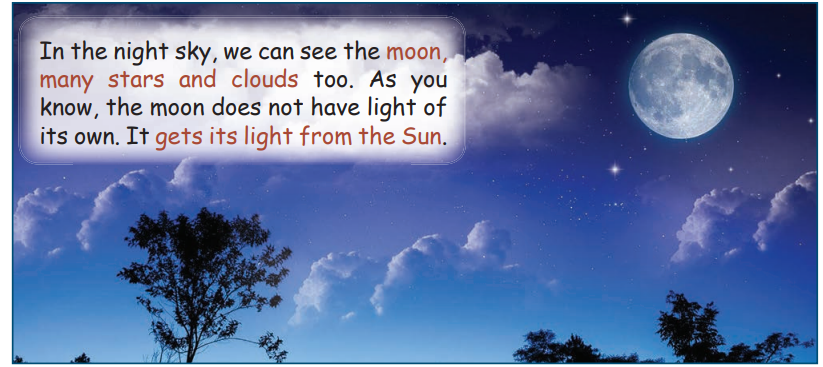
Phases of the Moon
Let Us Discuss
Does the moon look the same every day?
Observe the moon in the sky every night for fifteen days and find out.

The moon appears to change shape every
night. On the night when we see it in its complete form, it is called the full moon (Pournami).
On the night when we cannot see the moon
at all (even when the sky is clear), it is called the new
moon (Amavasai).
Many festivals are celebrated based on
the phases of the moon - e.g., Eid, Mahalaya Amavasai.
Do you know? : Neil Armstrong was the first
man to step on the moon.
The Stars
There are countless stars in the sky. The Sun is the nearest
star. The stars shine during the day too, but
we cannot see their light because the Sun is much brighter than the other stars.
We see that a group of stars appears to form
a pattern in the sky. Have you seen any star
patterns?
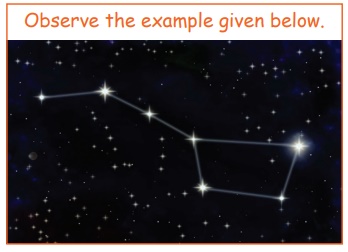
Do you know? The position of the pattern
of stars helped people to know when to sow and harvest crops. They also helped to
people find directions during travel.
Match
the following.
a) Sun - a dark area that travels with me
b) Stars - does not have its own light
c) Moon - form patterns
d) Shadow - helps
plants grow
Answer:
a) Sun - helps plants grow
b) Stars - form patterns
c) Moon - does not have its own light
d) Shadow - a dark area that travels with me
Rhythms of Day and Night
Day and night follow each other in a rhythmic way. Most animals and plants are
active during the day and sleep at night. Some plants close their leaves by evening, e.g., Rain tree (Thoongu-Moonji Maram). However, some animals are active at night. The bat, owl, wild big cat,
mouse, wolf, cockroach and firefly are examples of animals that
are active at night.
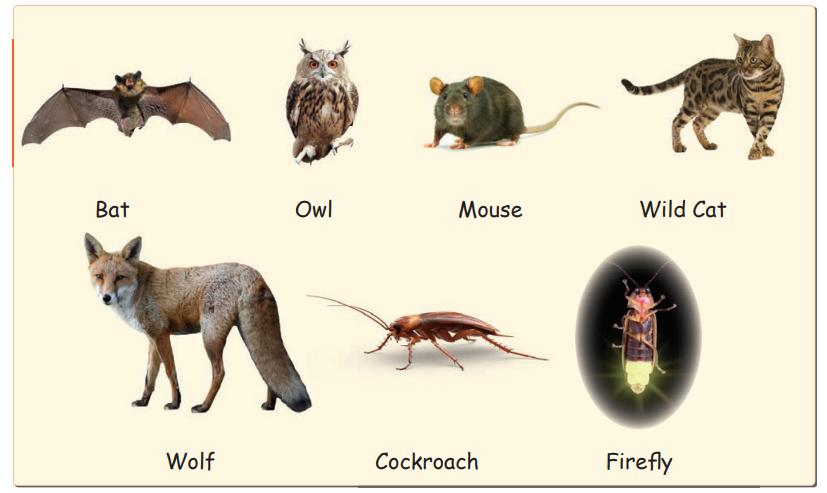
They are active at night to:
* Catch other
animals wandering at night for their food
* Avoid animals
that eat them during the day
* Avoid the
heat of the day
They have:
* Big eyes
(owl, cat)
* A sharp sense
of smell (mouse, dog)
* Good hearing
(bat)
Do you know?
Bats
use sound waves to fly and hunt. Owls can see what is behind them by rotating their
heads almost fully.
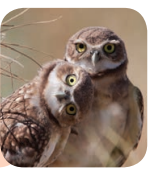
Most flowers bloom in the morning. However some flowers bloom at night. Examples are Jasmine, Water lilies, Tuberose, Cactus flower, Datura flower. Many of them have a lovely fragrance. Many are white in colour though some have attractive colours.
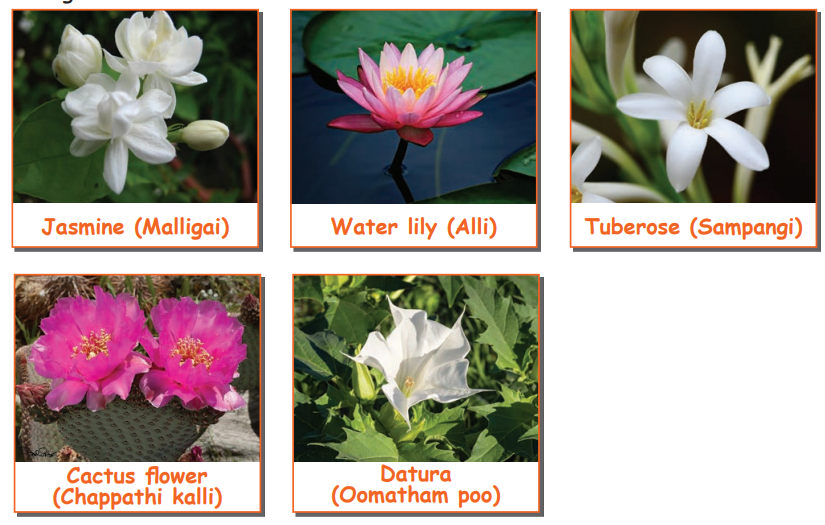
Do you
know?
The
Bethlehem Lily (Nishagandhi) is called the “Queen” of the flowers that bloom at
night.
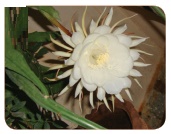
Identify and
tick (✓) the animals that are active at night.
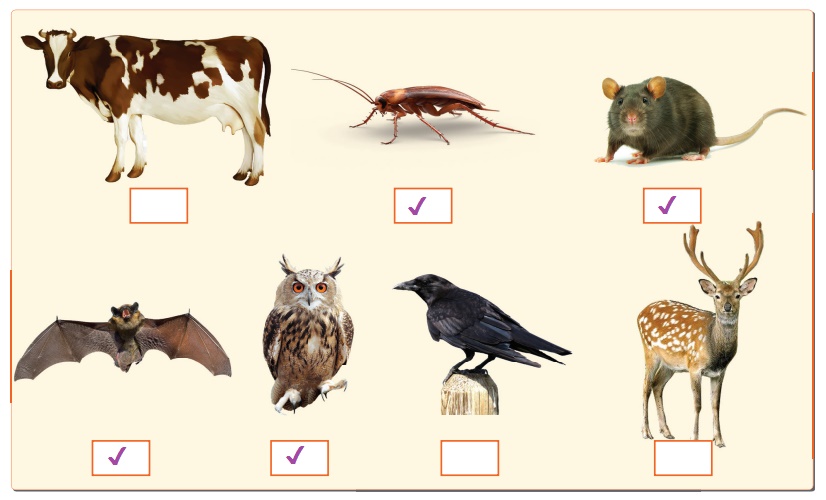
Directions
Front, back,
right and left tell us where things are, based on a reference point. North, South,
East and West tell us where places and things are, based on the position of the
Sun. They are called directions. Directions help us reach a place without getting
lost.
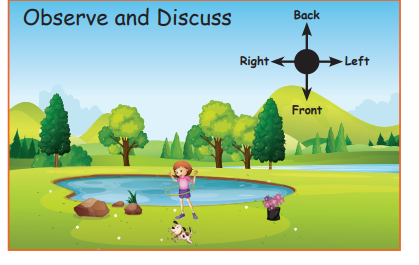
The Sun appears to rise
in the East and set
in the West. Now stand facing the Sun in the
morning (i.e. East). Behind you is West. To your right is South. To your left is
North.
Observe the
picture given below. In the centre is Meera.
To her South are the flower pots, to her North are the rocks, to her East is the
flower cart and to her West is the tree trunk.
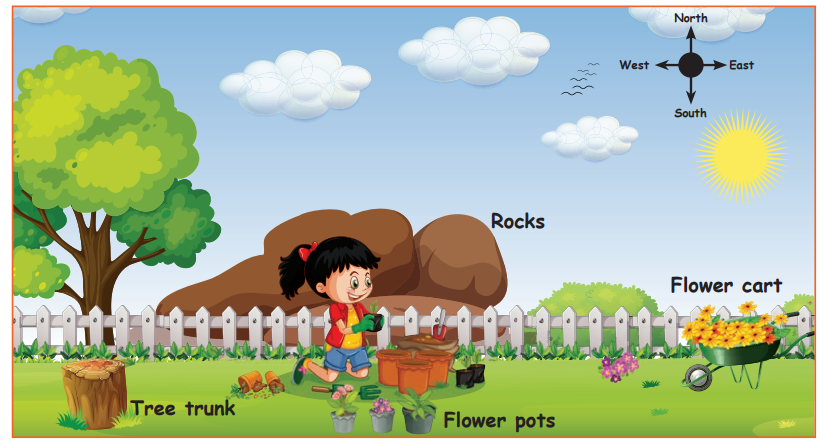
In your school,
identify the eastern direction by finding out where the Sun rises. Ask your teacher
to help you. Then find the direction in which the following are situated - water
tank, flag post, playground, toilet, kitchen, gate and water tap. Tabulate your
answer.

Related Topics